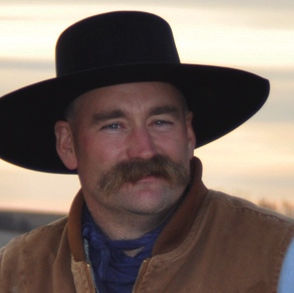Understanding the challenge
In my book, one bad turn of events in 2018 seems to be that much of the future of food production has moved to the courtroom.
Most have heard by now about Smithfield Farms’ three losses in North Carolina. No doubt everyone has now heard about Monsanto’s loss to the tune of $289 million but how many know about the Aug. 9, 2018, ruling from U.S. Court of Appeals Ninth Circuit that rendered an opinion on chlorpyrifos? It may be the most deadly yet.
Gary Baise is an attorney and was the first chief of staff to the first Environmental Protection Agency administrator and subsequently became director of the EPA’s Office of Legislation. He spends most of his time today taking on the federal government and the overreach issues with agencies like the EPA. In this case, Baise has shared with me that this ruling may pose a greater risk to farmers than any he is aware of.
On a recent Loos Tales program Baise said, “USDA proved to EPA that chlorpyrifos was a safe product. When you have a set of judges’ decisions based on models and theoretical information it is dangerous. The Monsanto decision is bad but actually the chlorpyrifos decision is much more dangerous.”
This is directly from the opinion submitted from the Ninth Circuit Court of Appeals.
The panel granted a petition for review, and vacated the Environmental Protection Agency’s (“EPA”) 2017 order maintaining a tolerance for the pesticide chlorpyrifos, and remanded to the EPA with directions to revoke all tolerances and cancel all registrations for chlorpyrifos within 60 days.
I went to the EPA website to gain some insight on the history of this product. It is clear that the Obama administration did everything possible to ban this product, without any scientific evidence to base the ban upon. In fact, it clearly reported in two places on the timeline that the only merit given for the ban seems to be the public comment part of the process.
After receiving public comments on the 2014 risk assessment and feedback from the FIFRA Scientific Advisory Panel, EPA revised its human health risk assessment for chlorpyrifos in 2016.
I can so clearly see the same process happening here that was the first action of the EPA in 1973 with the banning of DDT. It was documented that DDT saved 6 million lives from 1942 to 1969 yet it was banned because the public relations machine had tainted the opinion of citizens.
If we continue down this path of banning without scientific evidence to do so because the citizens have been misinformed then I ask you what is safe? In the case of chlorpyrifos, we have been successfully using this chemical since before the EPA was formed and now all of a sudden three judges order it off the market?
If that is the case look out because caffeine is next. We know for a fact that caffeine is also a pesticide that protects the plant from insects. That is exactly why God made caffeine as a naturally occurring chemical in the plant itself. So we are going to just react because we think all chemicals are bad. Where does it stop?
Here is a dose of reality. The World Health Organization reports that 3.4 million people die each year from drinking water. Of course, it is not the water that’s deadly but the contamination within the water. Between 1900 and 1940 in the United States, we cut that mortality by adding a toxic gas to the water to kill the bacteria. Yes, this toxic gas found its first use during World War I as a weapon. That weapon is called chlorine.
So should we, as a society, rain upon the parade of what has improved life since 1900 by curtailing bacteria growth in water? We use chemicals to kill the enemy, and in this case the enemy is a pest whether it be in a tree or the bacteria in your swimming pool. We need to safely kill these enemies because science says it’s safe and not because the misinformed activists think our methods are a threat to them.
Editor’s note: Trent Loos is a sixth generation United States farmer, host of the daily radio show, Loos Tales, and founder of Faces of Agriculture, a non-profit organization putting the human element back into the production of food. Get more information at www.LoosTales.com, or email Trent at [email protected].
